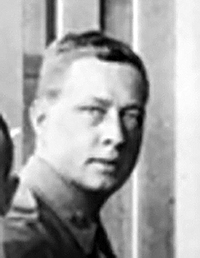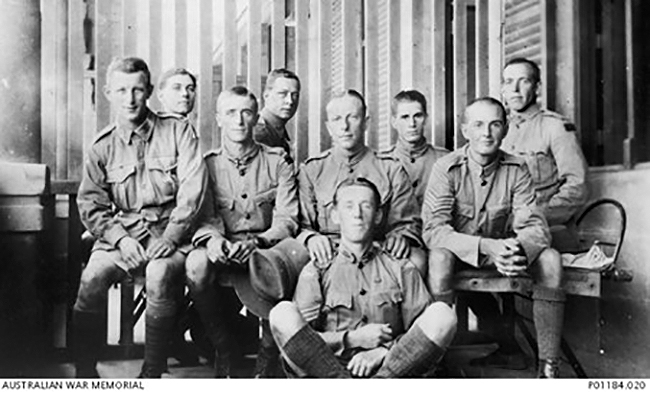John (Jack) M Walker

Ballarat City Rowing Club (VIC)
Lieut. John (Jack) Mercer Walker
John Mercer Walker was born in Ballarat in 1888. He was the son of John and Eliza Walker, of 23 Sturt Street, Ballarat. His secondary education was at Ballarat College in 1902 and he was Dux of the school in 1904. He joined the Ballarat City Rowing Club in about 1910 and was listed as winning the club fours in 1911. In 1912 he rowed in the club’s Maiden eight at Upper Yarra and Albert Park Regattas and in 1913 was stroke of both the maiden and lightweight eights. He worked as a chemist in Ballarat.
He enlisted on 1st October 1914 as a Private in the 3rd Light Horse Field Ambulance. He embarked from Melbourne on A51 “Chilka” on the 2nd of February, 1915. He was a 26 year old bachelor and his mother was listed as his next of kin. He was appointed Staff Sergeant Dispenser in the 3rd Light Horse Field Ambulance, and served briefly on Anzac and then proceeded to Mudros on the 10th of November, 1915. On the 6th of August, 1917, he attended a Royal Flying Corp, School for Military Aeronauts, and graduated as a Pilot, and was appointed Lieutenant and transferred to 21st Squadron Australian Flying Corp in November 1917 and served in Palestine.

Middle East. Circa 1918. A Group Of "Cadets" For The Australian Flying Corps, Recruited From Serving AIF Units.
Left To Right: Back Row: Lieutenant (Lt) Murphy, Lt Paul, Lt John Mercer Walker (Killed), Lt Blake. Middle Row: Lt Poole (Prisoner Of War), Lt Robinson, Lt Dowling, Unknown. Front Row: Lt McGuinness.
(Original Housed In AWM Archive Store) (Donor J. E. Worth)
He was killed in action near Baku on 22nd August 1918 aged 30, and is buried in Ramleh War Cemetery, Israel.
This is an extract from Cutlack, F.M. (Frederic Morley) The Australian Flying Corps in the Western and Eastern Theatres of War 1914-8, Angus and Robertson Ltd Sydney, 1941 – Page 144, describing how he died:-
An L.V.G. two-seater was shot down near Ramleh next day by Brown (1) and Finlay (2), and its occupants taken prisoner, but the fight was marred by the loss of Walker and Lieutenant Harold Alexander Letch MC, who were patrolling with Brown. The enemy crossed the lines at a great height, and the Australians climbed to cut him off. The whole squadron saw the fight from the aerodrome floor. The L.V.G. turned for home and Walker took the grave risk of attacking from above and behind in full sight of the German’s rear gun. In a few seconds Walker’s machine (3) was seen to fall and burst into flames Brown, who had manoeuvred in front of the L.V.G., gave Finlay the shooting. Finlay’s guns, however, fell out of their mounting, and Brown then attacked the L.V.G. head-on and drove it down to a bad landing near the Ramleh aerodrome.
From the official history of the AFC was this Statement by Sgt. C. G. Thomas, 'Out on patrol work over Ramleh Ludd, Palestine. Walker killed the observer in the Hun machine and Fritz pilot brought his machine down in British Aerodrome. While Walker was still pursuing the Hun plane the Hun pilot fired explosive bullet at Walker's machine bringing it down in flames. Walker jumped from his machine and his body was buried at Ramleh.' The club commemorated him in 1923 when they named a new practice scull the “JACK WALKER”.
John had two younger brothers who also enlisted Stanley Walker, who was a salesman, age 25 when he enlisted and Harold James Walker, chemist's apprentice, age 21.
Kate Elliott
November 2021

